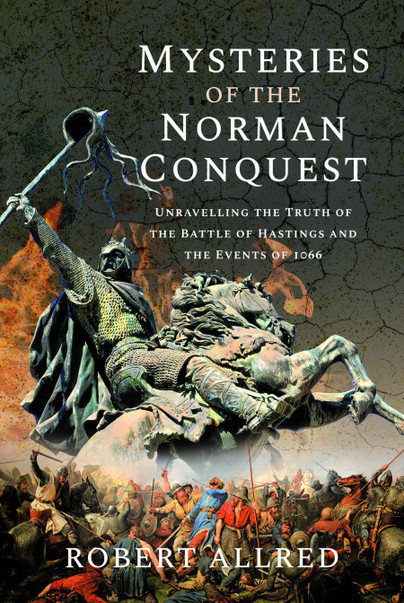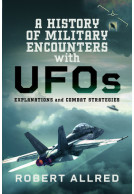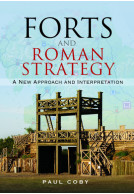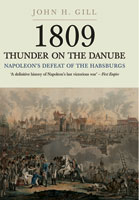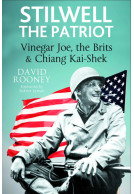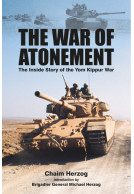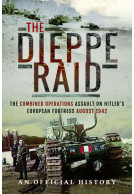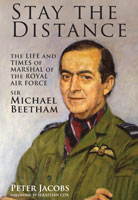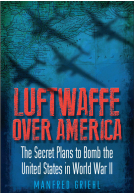Mysteries of the Norman Conquest (Hardback)
Unravelling the Truth of the Battle of Hastings and the Events of 1066
(click here for international delivery rates)
Need a currency converter? Check XE.com for live rates
Recent challenges to the traditional site of the Battle of Hastings have led to a surge of interest in the events surrounding England’s most famous battle. This, in turn, has increased speculation that the titanic struggle for the English crown in 1066 did not take place on the slopes of what is today Battle Abbey, with a number of highly plausible alternative locations being proposed. The time had clearly come to evaluate all these suggestions, and Robert Allred decided to take on that task.
Taking nothing for granted, Robert hiked round the sites of the three battles of 1066 – Fulford, Stamford Bridge and Hastings. Armed with the medieval sources and much of the current literature, he set out to appraise the evidence and to draw his own unbiased conclusions.
Following in the footsteps of the Viking warriors of Harald Hardrada, the knights of William of Normandy and the Anglo-Saxon soldiers of King Harold, the reader is taken on a journey from Yorkshire to the South Coast and down through the ages to re-examine what has been written about that momentous year – the intrigues, preparations and manoeuvres – which culminated on 14 October 1066, on a bloody hill somewhere in Sussex.
Whether this will settle the debate over the site of the Battle of Hastings or prompt further investigations remains to be seen, but it will be a book which cannot be ignored and which the reader will be unable to put down!
Rating: 5 out of 5 stars
NetGalley, June Lee
History buffs and curious readers alike, prepare to embark on a journey through one of England’s most pivotal and mysterious historical events: the Norman Conquest of 1066. In "Mysteries of the Norman Conquest: Unravelling the Truth of the Battle of Hastings and the Events of 1066," Robert Allred takes readers on a meticulously researched and enlightening exploration of the year that changed England forever.
Central to the book is a bold question: Did the Battle of Hastings take place on the site we’ve long believed it did? Allred tackles this debate head-on, armed with medieval sources, modern scholarship, and a willingness to challenge conventional wisdom. The author’s methodical approach—hiking to the sites of the three major battles of 1066 (Fulford, Stamford Bridge, and Hastings)—lends authenticity and detail to his analysis.
Allred’s investigation reads like a detective story, piecing together clues from ancient texts, terrain analysis, and historical conjecture to reassess the events surrounding William the Conqueror’s decisive victory. Whether or not you agree with his conclusions, his work is undeniably thought-provoking and contributes significantly to the ongoing discourse about the Norman Conquest.
Rating: 5 out of 5 stars
NetGalley, Jaime Burns
I enjoyed this book! As a person who used to be bored by history, I now find myself fascinated by early European, Viking, Saxon, and Danish history. This book follows The Normans and how they helped to shape our present world. Very interesting and well written!
Allred has explored the terrain of the battlefield of Hastings, both the widely accepted site and alternatives proposed by others, quite thoroughly. His critical reexamination of the physical and documentary evidence has led him to his own proposal for a surprisingly plausible site quite close to the traditional one. He raises good questions, and his conclusions should receive attention, not least as a guide to possible archaeological exploration of the site he proposes.
Stephen Morillo, Chair, History Department, Wabash College
This rather unnecessarily dramatic title and subtitle masks a new examination of medieval sources and a walkabout of the areas of the 1066 battles of Fulford, Stamford Bridge, and Hastings.
Historical Miniatures Gaming Society, September 2023
Allred spent a semester in the UK at the University of Sussex, about an hour from the battlefield at Hastings. He took five trips there and other trips northward to walk (on roads and via public paths) all around the area, coming to the geographic conclusion that the battle was fought a few hundred yards from the "official" battlefield near the Abbey.
Specifically, his version occurred near the second roundabout on Powdermill Lane. Unfortunately, I have no idea where that is because you'd think that a book that recounts the ins and outs of walking all over the area would include a map -- and I certainly don't count that refrigerator art opposite page 79.
I understand the author is required to provide art, but really, the four color Hastings "maps" look like a beginner used Microsoft Paint. Let's not even go there about a lack of a scale. The text does a masterful job of analyzing contours and locations, but could he not find an official British government source for a real map?
The only reason I grumble about such a lack of supporting cartography is that it seems reasonable to shift the battlefield a bit -- assuming that the general terrain is as it was in 1066. Hills are likely similar except where a railroad now sits, and his scant forest research only dates back to an 1895 map.
I will point to the book Crecy: Battle of Five Kings (see the book review in the 6/29/2022 AAR or up on hmgs.org) that argues the actual battle is not where it is currently ‘officially’ located. Same modus operaendi: literature search, area walkabout, but with nicely done maps showing both places -- including a fragment of a 1709 map that also shows a different spot.
It's been decades since I visited the Battle Abbey, the overlook of the battle, and the path with information panels about the battle. I applaud his vigor at sleuthing out public paths to get to places off the official tourist route.
The book also contains 13 color photos of his walks, including an old apple tree in a grove that may have been where King Harold was slain -- not by an arrow to the eye but by William and a trio of men-at-arms -- and the Fulford and Stamford Bridge sites. One Microsoft Paint "map" each of Fulford and Stamford Bridge are of equal finger-painting quality as the Hastings "maps."
Part travelogue, part battle recap, and part literature survey, the mysteries are far less mysterious that you might expect, and yet, possibly contribute to greater accuracy about battle locations and how they unfolded. I'd like to see a greater emphasis on battlefield archeology -- find metal in some of these out of the way places and you've got compelling evidence.
As I noted in the Crecy review, much is speculation, even when backed up by thought-provoking detective work.
Enjoyed it.
Review as featured in
After Action Report Newsletter, August 2023
A very interesting read on Norman history. Well researched and put together with some very interesting facts. I would thoroughly recommend it to everyone.
NetGalley, Lional Jones
I thoroughly enjoyed this book and enjoyed how it was broken up into specific sections throughout the book which made it easier to read and believe each argument. I must admit to agreeing mostly with the conclusion in the book, but would it settle all the arguments, well you just have to read it and see what you think.
The History Fella
Read the Full Review Here
Rating: 5 out of 5 stars
NetGalley, Annie Buchanan
I was fascinated reading the author's presentation of both the primary historical sources on the Norman incursions into England and events of the period which have been muddled or partially lost to the passage of time. The author begins with a helpful recap of the undisputed events of the period, and on to the salient battles (Fulford, Stamford Bridge, and finally Hastings). He also examines the composition of the warring forces, their technology, and the relevant physical terrain, then and now.
It's annotated well throughout, and the chapter notes and bibliography will give rich scope for further reading for keen students of the period. Probably the highlight for me was the author's riveting (really!) discussion of the Bayeux Tapestry and its inception and known history. I'm a keen embroiderer (it's not a tapestry, as most people know by now) and reading about the work and the history and disposition of the piece, as well as the missing/lost panel of William's coronation, was fascinating. The sheer scope of the tapestry has always amazed me and although not lavishly illustrated, the text was fascinating.
About Robert Allred
Robert Allred graduated from the University of California, Berkeley and attended the University of Sussex while researching Mysteries of the Norman Conquest, also a Pen and Sword publication.
William the Conqueror is crowned King of England at Westminster Abbey
25th December 1066
William the Conqueror is crowned King of England at Westminster Abbey, completing the Norman conquest of England







